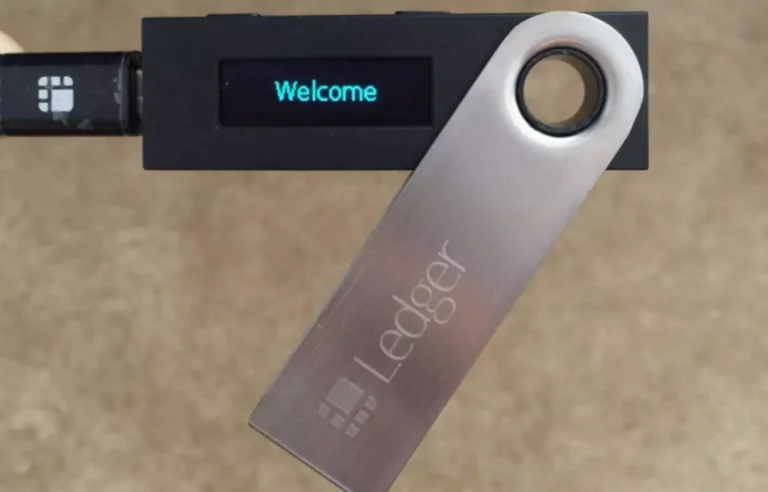Dive Into The Pool #3: What Is Impermanent Loss Il?
Impermanent loss is only theoretically “impermanent” as a outcome of the loss isn’t realised or made “permanent” till the property are withdrawn from the pool. Impermanent loss occurs as a outcome of rebalancing movements inside a liquidity pool, presenting a danger for liquidity providers who stake their assets in the pool. Liquidity pools, being unbiased from one another and from centralized exchanges (CEXs), usually have different asset costs creating alternatives for traders. If an asset’s worth in a pool differs from its market worth, merchants can revenue by buying the asset within the pool and promoting it elsewhere. Liquidity mining has at all times been risky, and impermanent loss makes it riskier since crypto markets stay unstable.
It’s additionally essential to note that impermanent loss doesn’t keep in mind trading charges that investors earn for providing liquidity, which in plenty of instances can negate any losses. When the rebalancing formula for an AMM’s pushed token generates a disparity between the price of an asset in a liquidity pool and its market price, an impermanent loss occurs. Because AMM formulation prioritize a ratio balance, the asset value of your pool could differ from its market worth. Thus, if you were to promote your tokens out of the liquidity pool, you’ll undergo a loss.
How To Add Liquidity To The $sqr Token On Pancakeswap In 7 Steps
When collaborating in yield farming, it is important to consider the potential IL one might incur. The rewards earned from yield farming will not be enough to compensate for the loss in worth of the preliminary deposit because of IL. Therefore, it is essential to rigorously assess the potential dangers and rewards when choosing yield-farming options. It does not matter whether or not the price of one of many currencies within the crypto pair rises or falls. These are just a number of the methods to mitigate the impermanent loss danger in AMMs.

In this text, we’ll study what “impermanent loss” is and how it can affect liquidity providers’ income. When you add liquidity to a pool, the prices of crypto pairs naturally change. The risk of permanent loss is decided by the extent to which prices deviate from whenever you deposited the assets. If cryptocurrency prices don’t return to their authentic values, you may not be capable of withdraw your funds. The neatest thing to do is await the value ratio to revert earlier than you can withdraw.
In the proper world with no impermanent loss, the LPs would just be amassing money from trading fees. For example in relation to Uniswap, every commerce that goes by way of a liquidity pool pays a 0.3% fee that’s proportionally distributed to the LPs of that pool. Providing liquidity for more volatile property increases impermanent loss risk. If one asset outperforms the other, then you definitely’ll incur an impermanent loss; but when the pair falls or rises against one another, you are good to go.
How Proof Of Reserve Can Build Again Belief In Crypto
Therefore, every investor considering this path ought to do their due diligence to make sure they perceive the dangers they face, given the buying and selling pool they’re depositing funds into. There are pools https://www.xcritical.com/ on protocols like Bancor and BakerySwap that require enter on one facet of the pool. An example is whether it is an ETH/DAI pool, the exchange only requires ETH input from suppliers.
In the case of extremely risky assets, nevertheless, traders are probably to offset their impermanent losses with the yield generated from the liquidity pool. While IL presents a risk, it is very important note there are also potential rewards to liquidity provision. In reality, IL may be a trade-off for the potential rewards that liquidity provision offers.
On the other hand, if the LP determined to withdraw their liquidity, they’d realise their lack of $23.forty one, completely. By predicting it with our algorithms, we are capable of take it in consideration and cut back it when calculating and producing your interests. The APY that you’ll see on our platform accounts already impermanent loss. Lobster is the greatest way to generate yield with out the want to continually monitor your DeFi positions.
🏊🏻♂️ Dive Within The Pool # 1 : The Liquidity Swimming Pools
In the decentralised finance (DeFi) world, Impermanent Loss (IL) is a phenomenon with a probably significant influence on a user’s portfolio. It refers again to the temporary loss of worth that happens when a person offers liquidity to a decentralised change (DEX) or yield-farming protocol. This loss is termed ‘impermanent’, as it is just realised if the person withdraws the property from the pool. Several web sites, corresponding to Daily DeFi, have developed on-line calculators to help merchants decide whether or not depositing their crypto belongings into a liquidity pool is definitely price the threat.

Decentralized trading protocols enabling crypto investors to earn via liquidity provision is a welcome development. Despite its advantages, liquidity provision presents a draw back that every investor must know about. Impermanent loss is a danger that liquidity providers in the DeFi markets want to be aware of to permit them to put enough threat management practices in place. But, in case of a substantial value difference, your charge profit might not cowl the loss. In this case, you’d have gained more value if you held the belongings as an alternative of offering liquidity. You shouldn’t construe any such info or different material as authorized, tax, funding, monetary, cybersecurity, or other advice.
Liquidity mining, in essence, is a way of rewarding LPs with additional tokens for offering liquidity to sure pools or utilizing a protocol. The value of the additional tokens in some instances can utterly negate the value misplaced by impermanent loss, making providing liquidity highly profitable. If you need to study extra about yield farming and liquidity mining you presumably can check out this text. IL happens if the value of a token significantly differs from when a liquidity supplier deposited it into the liquidity pool. This happens when the value ratio of pooled pairs considerably fluctuates. In essence, impermanent loss is a brief lack of funds occurring when offering liquidity.
IL calculators are available to help estimate the potential loss a user could incur when offering liquidity to a specific pool. They keep in mind varied elements, such because the preliminary asset prices, the pool composition, and the price adjustments over time. In this instance, you experienced a $500 impermanent loss by providing liquidity to the pool.
Liquidity pools are a vital part of DeFi and play an important role in yield farming, which involves offering liquidity to pools in trade for rewards, usually within the type of further tokens. Hence, Hence, when the value of XRP skyrockets on exchanges, arbitrageurs might benefit from market discrepancies to make earnings. In our example, arbitrageurs may buy XRP at a much less expensive price from the XRP–BUSD pool and sell it at the next value on other platforms.
More Articles By This Author
This loss is just tangible if traders withdraw their liquidity from the pool at that actual moment in time. Often, swimming pools employ methods to offset this loss, corresponding liquidity mining pools to charging high fees to make more profit. Therefore, liquidity suppliers make extra from fees to cowl their impermanent loss.

By launching on Cardano, which makes use of the EUTxO model, every liquidity position equipped at a given trade range is a singular UTXO, minted as liquidity NFTs. Because the price range (price tick) a liquidity supplier opts to offer liquidity doesn’t change, there is zero impermanent loss. When the prices of assets in a liquidity pool expertise excessive levels of volatility, the potential for IL increases. This is as a end result of the relative value of the belongings inside the pool can drastically fluctuate, resulting in the next chance of IL.
A halving occasion is aimed at lowering inflation by lowering the amount of latest cash created and chopping mining rewards in half. A ‘witness’ is a transaction signature testifying to the authenticity of a particular transaction, verifying a cryptographic claim. Confirmation time refers again to the amount of time it takes for a transaction to be verified and added to the blockchain.
- It is a yield optimizer constructed above the DEX for autonomously managing liquidity positions using Artificial Intelligence and Machine Algorithms developed by the Genius Yiel team.
- The rewards earned from yield farming may not be enough to compensate for the loss in value of the initial deposit as a outcome of IL.
- As we can see the LP would’ve had $23.41 more if they just held their assets without offering liquidity.
- In this situation, arbitrageurs revenue at the expense of liquidity suppliers, who technically own less XRP than they did before.
- This principally leads to a situation the place profit from the token that appreciated in worth is taken away from the liquidity provider.
The value of crypto property can increase or decrease, and you could lose all or a substantial quantity of your buy worth. When assessing a crypto asset, it’s essential so that you can do your analysis and due diligence to make the very best judgement, as any purchases shall be your sole responsibility. Please observe that the supply of the services on the Crypto.com App is subject to jurisdictional limitations. Crypto.com could not offer sure merchandise, options and/or services on the Crypto.com App in sure jurisdictions due to potential or actual regulatory restrictions. As you could have seen, the IL comes when the 2 property that you’ve deposited in the pool usually are not correlated. If the worth of LINK on exterior exchanges adjustments from 15 USDC to 10 USDC, the paper loss would be reversed.

